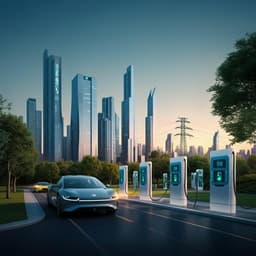
Environmental Studies and Forestry
Electric light-duty vehicles have decarbonization potential but may not reduce other environmental problems
H. Chen, S. E. C. Sener, et al.
Explore the surprising results of a global life cycle assessment comparing electric vehicles to traditional ones! This research, conducted by Hao Chen and colleagues from Clemson University, highlights not only the decarbonization potential of EVs but also the unforeseen impacts on rural communities. Dive into the nuanced findings that call for tailored sustainable transportation strategies.
Playback language: English
Related Publications
Explore these studies to deepen your understanding of the subject.







